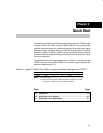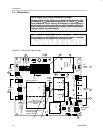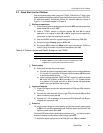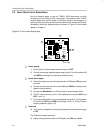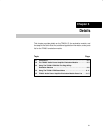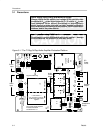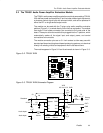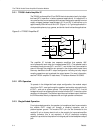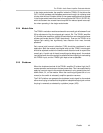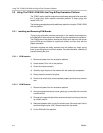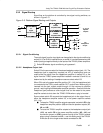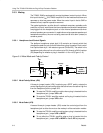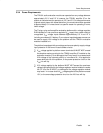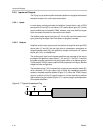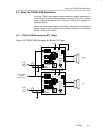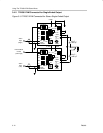
The TPA301 Audio Power Amplifier Evaluation Module
3-5
Details
In the single-ended mode, the amplifier inside the TPA301 IC that drives the
OUT– line still operates and dissipates power even though it is not being used
to help drive the load. A better choice for low-power applications that operate
in the single-ended mode from time to time might be the TPA311 (SLOP116),
which shuts down the unused internal amplifier for reduced power consump-
tion when operating in the single-ended mode.
3.2.4 Module Gain
The TPA301 evaluation module can be set for an overall gain of between 2 and
22 by adjustment of the the onboard gain control, R4. The TPA301 amplifier
IC, as most other amplifiers, exhibits its best distortion and noise performance
at lower gain levels (see the TPA301 data sheet). Even so, the TPA301 at its
highest gain setting has significantly less distortion than most low-cost
speakers.
Gain versus total harmonic distortion (THD) should be considered in each
application. Both the module input signal level and the TPA301 module gain
should be adjusted to obtain the lowest overall distortion level for a particular
overall gain. A quick rule of thumb (everything else being equal): the module
input signal level should be as high as possible without clipping or overloading
the TPA301 input, and the TPA301 gain kept as low as possible.
3.2.5 Shutdown
When the shutdown terminal of the TPA301 amplifier IC is taken high, the IC
ceases operation and enters an ultralow-power state. This is accomplished by
applying a control signal to the module shutdown pin or by pressing the shut-
down switch, S1, on the module. When the control signal goes low or is re-
moved (or the switch is released), amplifier operation resumes.
The P-N-P platform can generate the shutdown (mute) signal for the module
either when a plug is inserted into the platform headphone output jack or when
the plug is removed, as selected by a platform jumper (JP8).



